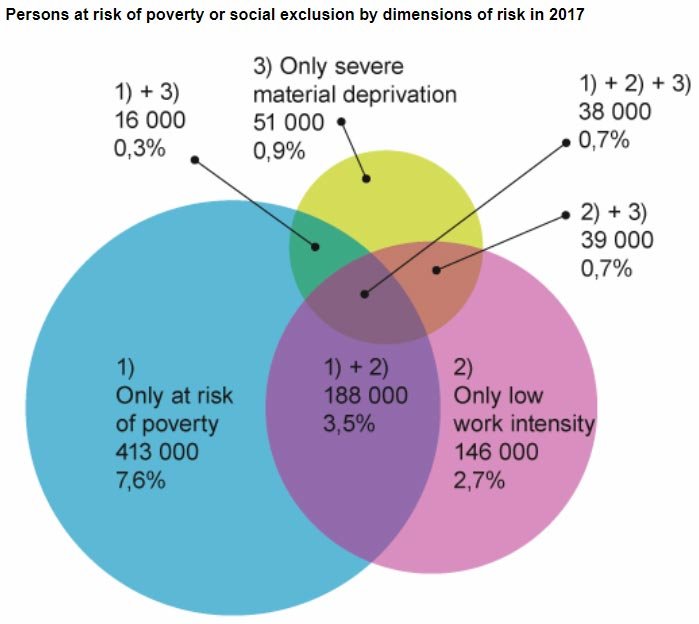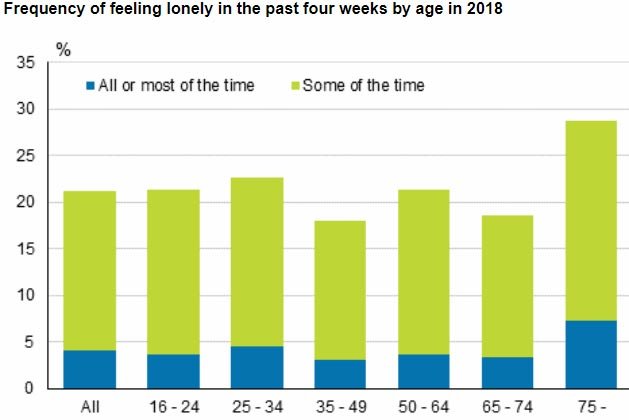Finland can lead some of the world rankings of welfare and happiness, but that does not mean it is a problem-free society. According to results of Statistic's Finland new study on living conditions, 890,000 Finns (16.4% of the population) were at risk of poverty or social exclusion in 2017.
The Finnish statistical office explains after analyzing the figures that most of the people that are at risk of poverty or social exclusion live in low income households, which constituted 12.1 per cent of the population. Next to living in a low income household, having low work intensity is second most common, affecting 7.6 per cent of the population. Severe material deprivation is less common and applies to 2.6 per cent of the household population.
Being at risk of poverty or social exclusion means that the person is living in a low income household, a household with low work intensity or a household that experiences severe material deprivation.

Source: Statistics Finland.
One of these risks materializing means that the person is at risk of poverty or social exclusion, but the three risks can also be simultaneous. There were 654,000 persons living in low income households, 410,000 persons with low work intensity and 143,000 living in severe material deprivation in 2017.
Most persons at risk of poverty or social exclusion are only members of low income households. They numbered 413,000 persons or 7.6 per cent of the population and slightly under one-half of all persons at risk of poverty or social exclusion.
The second most common situation was to experience both low income and low work intensity, which affects around 188,000 persons or 3.5 per cent of the population. Mere low work intensity is the third most common, and that applies to approximately 146,000 persons, or 2.7 per cent of the population.
Lower risk than in the rest of Europe
Despite those numbers, the risk of poverty or social exclusion is lower in Finland than in Europe on average. In the EU 28 member states approximately 22.4 per cent of the population were at risk of poverty or social exclusion in 2016 when the share in Finland was 15.7 per cent. Finland’s share is the third lowest among the EU countries, remarks Statistics Finland.
In Finland, the risk of poverty or social exclusion is through low income directed especially at young adults and persons aged over 75 for whom the risk of poverty or social exclusion is on the EU average level.
The burden of loneliness
The survey on Income and Living Conditions also shows that 4.0 per cent of the population aged 16 or older, that is, around 179,000 people, felt lonely all the time or most of the time in 2018.
Altogether, 21.2 per cent or 950,000 Finns aged 16 or older felt lonely all the time, most of the time, or some of the time. Those aged 75 or older were loneliest, as 7.3 per cent of them were lonely all the time or most of the time and around 28.7 per cent were lonely at least some of the time.

Source: Statistics Finland.
Persons living alone felt lonely most often and, in addition, in single supporter households, the feeling of being lonely was more common than on average.
The Survey on Income and Living Conditions used as the basis of the statistics on living conditions asked in 2018 of persons aged 16 or over how often they had felt lonely in the past four weeks. The response alternatives were all the time, most of the time, some of the time, a little of the time and none of the time.











